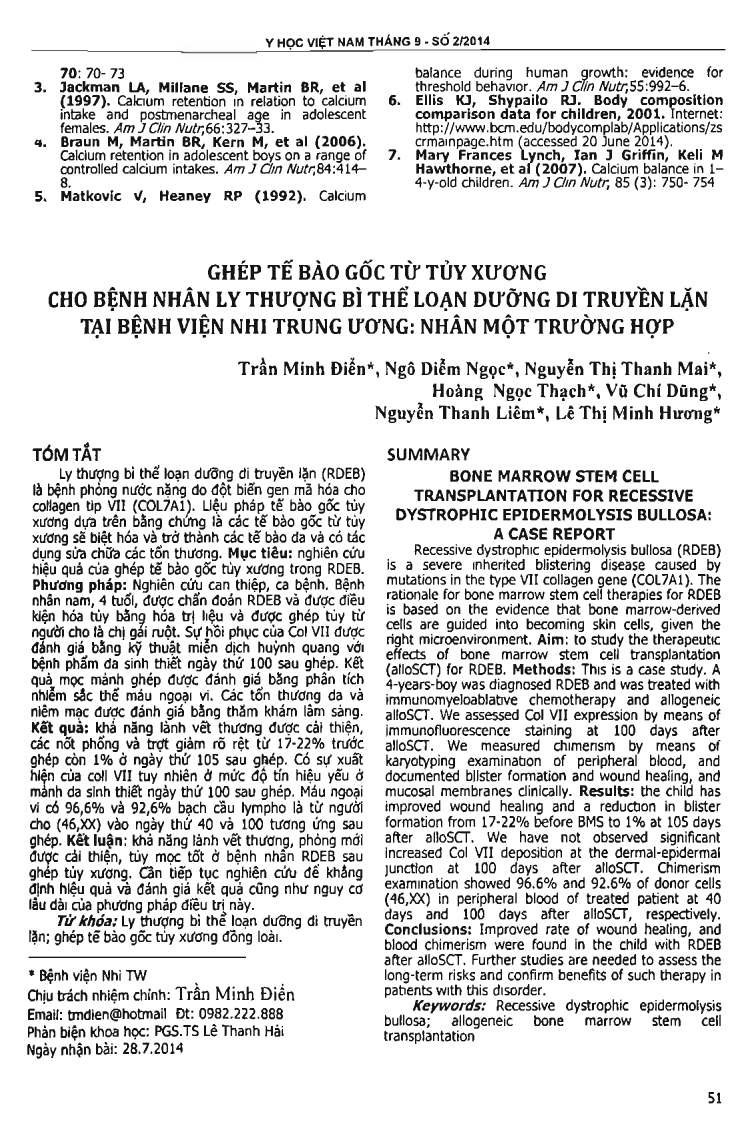
Recessive dystrophic epidermolysis bullosa (ROES) is a severe inherited blistering disease caused by mutations in the type VII collagen gene (COL7Al). The rationale for bone marrow stem cell therapies for ROES is based on the evidence that bone marrow-derived cells are guided into becoming skin cells, given the right microenvironment. Ain:t: to study the therapeutic effects of bone marrow "Stem cell transplantation (alloSCT) for ROES. Methods: This is a case study. A 4-years-boy was diagnosed ROEB and was treated with immunomyeloablative chemotherapy and allogeneic alloSCT. the authors assessed Col VII expression by means of immunofluorescence staining at 100 days after alloSCT. the authors measured chimerism by means of karyotyping examination of peripheral blood, and documented blister formation and wound healing, and mucosal membranes clinically,. Results: the child has improved wound healing and a reduction in blister formation from 17-22 percent before BMS to 1 percent at 105 days after alloSCT. the authors have not observed significant increased Col VII deposition at the dermal-epidermal junction at 100 days after alloSCT. Chimerism examination showed 96.6 percent and 92.6 percent of donor cells (46,XX) in peripheral blood of treated patient at 40 days and 100 days after alloSCT, respectively. Conclusions: Improved rate of wound healing, and blood chimerism were found in the child with ROEB after alloSCT. Further studies are needed to assess the long-term risks and confirm benefits of such therapy in patients with this disorder.
- Đăng nhập để gửi ý kiến
